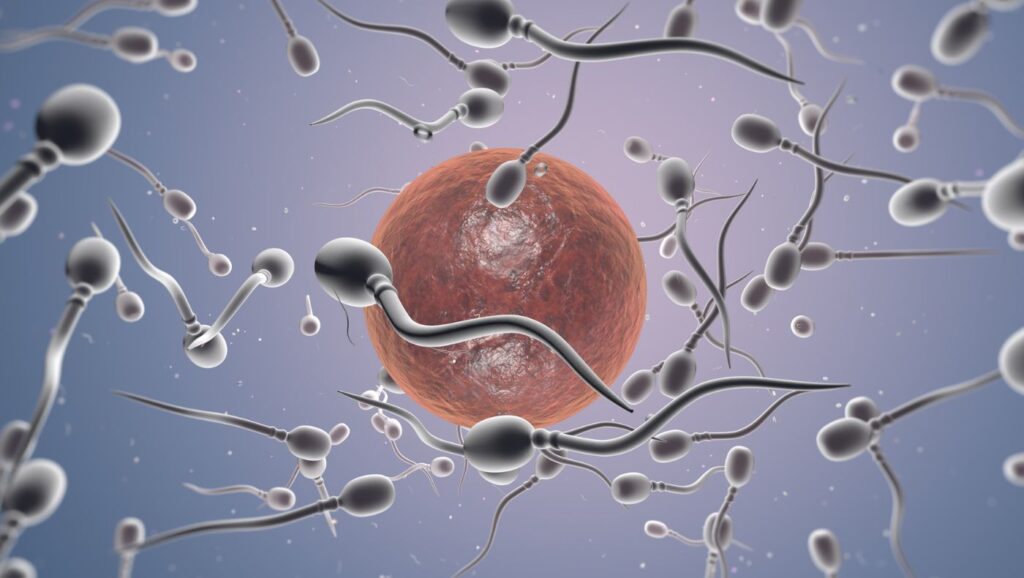
Introduction
The human body needs sperm and ovum cells to make new life through fertilization. Each gamete differs from the other in multiple aspects including size shape and genetic content. To understand how human reproduction works you must learn how ovum and sperm distinct from each other.
Difference Between Ovum and Sperm
Structural Differences
The sperm organizes as a speckled moving structure for movement while the ovum exists as a bigger stationary cell filled with sustenance ready to start development.
Size and Motility Comparison
- Sperm:The sperm cell moves by tail (flagellum) with small size toward the ovum.
- Ovum: The ovum appears much bigger than sperm and has protective coverings to help the fusion process.
Genetic Contribution to Offspring
After fertilization the embryo receives 46 chromosomes when the sperm and ovum combine their 23 chromosome sets. The sperm decides the baby’s sex by bringing either an X chromosome or a Y chromosome during fertilization.
Sperm and Ovum: Individual Characteristics
What Is Sperm? (Define Spermatozoa)
The spermatozoon functions as the male reproductive cell. It has three main sections.
- Head: The head section holds genetic material and penetration enzymes to enter the ovum.
- Midpiece: Packed with mitochondria for energy production.
- Tail (Flagellum):The flagellum helps to move sperm from its origin to the ovum.
What Is an Ovum?
The female reproductive system produces only one cell called the ovum. Its inactive movement and cytoplasm help sustain growth of the developing embryo yet differ from spermatozoa motility and structure.
Lifespan and Survival Inside the Female Body
- Sperm: Sperm remains alive for 5 daily periods in the female reproductive organs.
- Ovum: After ovulation an ovum lives for 12 to 24 hours only.
How Is Sperm Genetically Different from Egg?
Chromosomal Differences (X vs. Y Sperm)
- Sperm cells bring either an X or a Y chromosome genetic material.
- The stored ovum in the female body always contains the X chromosome.
Role in Determining the Baby’s Sex
During fertilization the sex of the baby depends on whether the sperm provides an X or Y chromosome because each ovum contains only an X chromosome.
Genetic Variability and Mutation Potential
Sperm cells keep transforming their genetic makeup through frequent cell duplication which makes them vulnerable to mutations but the ovum stops developing during fetal growth and stays intact until it releases.
Fertilization Process in Humans
How Fertilization Occurs in Humans
During human fertilization a sperm joins an ovum to create a zygote that becomes an embryo. This operation makes sexual reproduction possible.
Journey of Sperm to the Egg
Spermatozoa travel the female reproductive system to achieve the ovum’s location inside the fallopian tube despite facing different obstacles.
Role of the Egg in Selecting a Sperm
The ovum turns on its ability to find and choose sperm that maintain good health during the joining process.
Stages of Fertilization and Embryo Development
Sperm Penetration and Fusion
The sperm settles onto the ovum’s surface zone pellucida to start enzymes that let it enter and merge with the cell.
Zygote Formation and Cell Division
After sexual union the genetic materials mix inside the fertilized egg that divides quickly into cells.
Implantation in the Uterus
The embryo moves toward the uterus later to attach to the decaying layer of the organ.
Conclusion
Human reproduction needs sperm and ovum to create life through their individual fertilization roles. The distinction between male and female reproductive cells explains how biological parents pass their DNA to offspring while allowing human beings to reproduce.
The next stage for your fertility path is ready to begin with Ovum Fertility. Trust Ovum Fertility to receive expert medical care along with professional guidance.
FAQs
1.What key trait separates an ovum from a sperm cell?
The female gamete known as ovum stays fixed on one spot while offering plenty of nutrients and measuring significantly larger. In contrast males produce many small and mobile sperm cells for the task of successful fertilization.
2.How fertilization occurs in humans?
Male reproductive cells go to the fallopian tube to combine with the egg to produce a zygote that will attach to the uterus.
3.Define spermatozoa.
Male spermatozoa bring genetic material to the ovum when they combine during the process of fertilization.
4.Sperm differs biologically from an egg in what features.
Sperm contains either an X or Y chromosome for baby sex determination but the ovum always offers an X chromosome.
5.Human fertilization happens in what way.
The human fertilization process passes sperm through the female body for ovum entry and creates a zygote inside her which attaches to the uterus.